Dog Skijoring May Be the Coolest Winter Sport You Ever Try With Your Spunky Pup
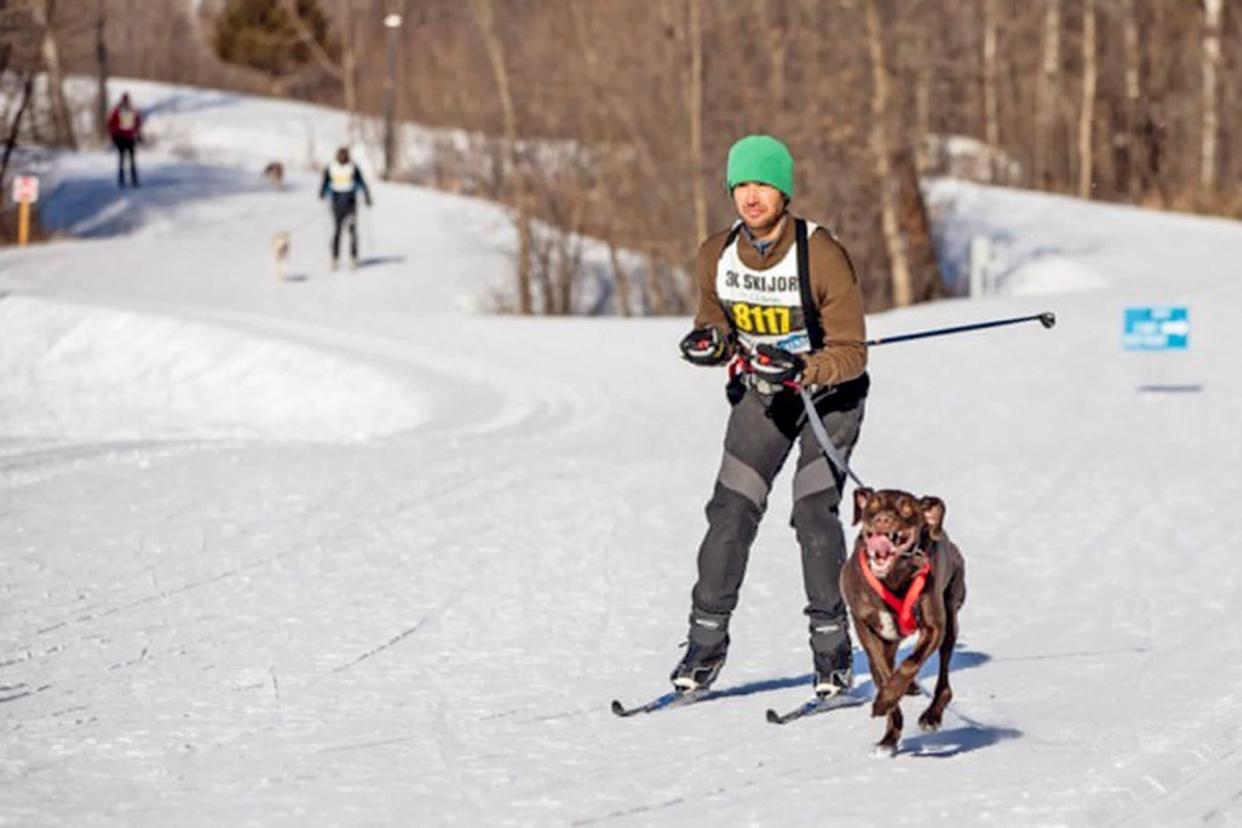
Courtesy of K9 Powered Sports
Gliding across a field of fresh snow makes cross-country ski fans quiver with delight. Now imagine taking those runs behind an excitable dog given the cues, "Hike!" and "Get up!" Wheeee! Now you're dog skiing—historically known as skijoring. It's an exciting way to break out of the winter rut and spend exhilarating quality time with your active pet pal.
What Is Skijoring?
Skijoring, from the Norwegian ski-kjøring or 'ski-driving,' was—and still is—a primary form of individual transport across massive snow-covered land in Finland, Norway, Russia, and Sweden. For centuries, the indigenous Sámi people in those northern regions traveled on skis pulled by reindeer. Over time, horses and dogs proved useful as well, especially in Northern China, Switzerland, and France. In fact, horse skijoring was an exhibition sport in the 1928 Winter Olympic Games, and reindeer skijoring races are still popular today in parts of Scandinavia.
It's really up to you how to approach this winter activity with your cold-weather pup. If enjoying the great outdoors when there's just the right nip in the air is your thing, cross-country skiing on a trail with your dog might be the perfect activity for the two of you to try.
But if you and your racy canine feel the need for speed, competition might be the goal. As you can see, these skijoring dog champions are so excited to get a move on!
Jonathan Thompson is the co-founder of K9 Powered Sports, based in Minnesota. With his 6-year-old cattle dog, Baella, he's both active in the sport and acts as a trainer for others. He tells Daily Paws anyone looking to get outdoors in the winter and provide their dog with unique enrichment can skijor—with one caveat.
"We should stress that the skijorer should already have a foundation in cross-country skiing," he says. "We're starting to see a lot of folks who are fascinated by the sport and want to get going but have no foundation in cross-country skiing. That's always step one."
You can often find beginners' classes through a local parks and recreation department, or with a surf and ski shop or an active outdoor retailer, such as REI. The more confident you are as a skier, the safer you and your dog will be.
Can All Dog Breeds Go Skijoring?
Many of them, yes! Not just the mushing Arctic wonders we'd first consider, such as Alaskan malamutes, Samoyeds, and Siberian huskies, but many other breeds, too, in various sizes. Want to feel the swift sprint of a greyhound? You can! Believe your border collie needs another to-do list item to keep his mind sharp? Skijoring might be the answer!
"We've seen dogs of all breeds and abilities succeed at this sport. We even have videos of dachshunds competing!" Thompson says. "However, depending on the experience one is looking for and the dog they have, certain breeds may lend themselves well for higher speed experience."
He adds that these are some best skijoring dogs:
Traditional northern breeds, like those mentioned above
Dock diving dogs, such as a whippet or Belgian Malinois
Disc dogs, such as any type of retriever
Weight-pulling dogs, like a Great Pyrenees or Bernese Mountain dog
High-energy pets of mixed breed heritage
Some small- or medium-sized dogs who love to run, although they'll be less likely to pull you and be more the scampering alongside or behind type
Hitting the trail with your snow-lovin' dog will probably be similar to any other outing, but Thompson strongly advises that only canines who are well-socialized around other dogs and humans participate in competition settings. Either way, he recommends establishing a good foundation of basic skills and cues with your pooch—such as sit, stay, and so on—before leveling up to more advanced dog skiing training. Positive reinforcement skill training assures another measure of safety before the two of you venture out into the wilderness or into competition.
RELATED: You Probably Should Have Enrolled in Puppy Kindergarten Already
How to Teach Your Dog to Ski
"First, consult with your veterinarian as to when your dog is ready to begin pulling sports," Thompson says. "Generally, they don't recommend it earlier than 1 year old, as the puppy is still developing."
Once you get the green light, you can strap on all the gear and work on training with specific skijoring cues in a wide-open area, even when there's no snow. Start slowly to help you both get a feel for the action. Your vocal intonation should be upbeat and convey excitement.
Line-out: Move toward the trailhead and stop when the tugline is taught
Hike or Let's Go: Go!
Get up: Speed up
Whoa: Stop
On-by: Ignore distractions, such as wildlife or movement of other dogs
Gee: Turn right
Haw: Turn left
Easy: Slow down
Some cues might also be combined, such as 'gee over' or 'haw back.'
You'll also need to assess if your dog naturally wants to pull. "Sometimes following or chasing another skijoring team can be helpful for dogs that don't instinctively understand to pull right away," Thompson says.
Fitness training might include keeping your dog at optimum weight and building pulling strength before speed. Your veterinarian could have more ideas, such as modifying diet and hydration based on activity level.
Most importantly, always ensure your dog is having fun. See the wide pup smiles on the dogs in the videos? That's a big clue! If not, Thompson says, stop.
RELATED: Biking With Dogs: The Dos and Don'ts of Canine Cycling
Skijoring Equipment You Might Need to Go Skiing With Your Dog
Naturally, you need the proper gear. For human skiers, Thompson suggests classic cross-country skis for better control or with slower dogs, and skate skis if you want to zip along with a faster pooch. And here's what you'll need to bring your dog along for the ride.
Pulling Harness
You need a well-fitting skijoring dog harness—something used for regular walks won't work. "Your dog should associate that pulling is not only OK but encouraged when wearing this harness," Thompson says. It should clear their legs, have a snug chest fit, and be well-padded on pressure areas.
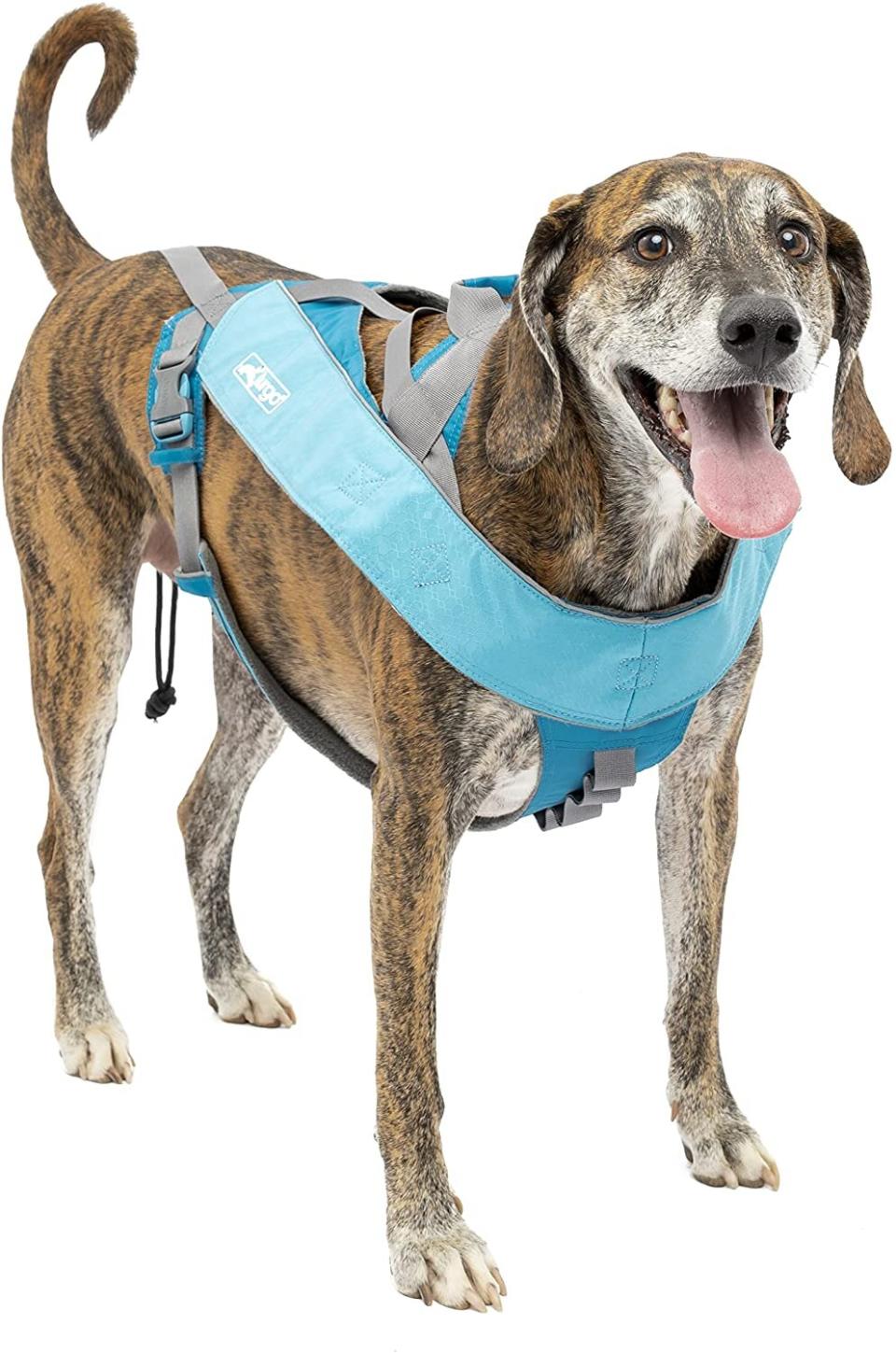
Quick Release Tugline/Bungee Line
The tugline attaches to your dog's harness and also to your skijoring belt (more on that below) with bungee flexibility and a quick-release feature for safety.
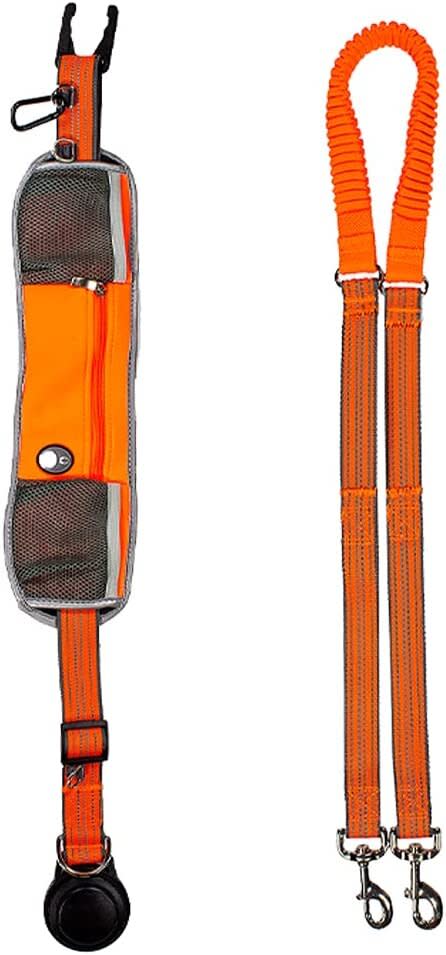
Dog Coat
Yes, you'll probably need one too, but a sporting winter coat is specifically to keep your short-haired dog comfy. Nordic dogs and other naturally double-coated breeds should be just fine without outerwear.
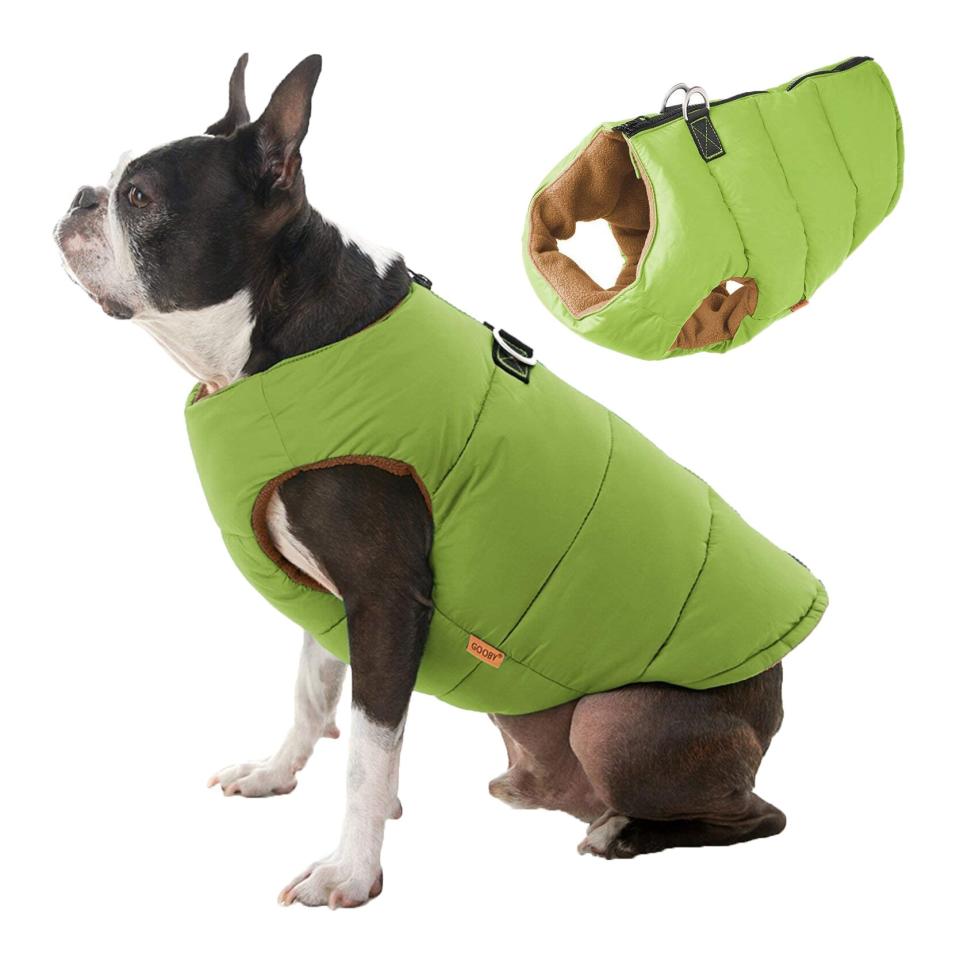
Poop Bags
"Leave no trace" as outdoor enthusiasts say, especially over skiing trails others will cross. Ick. Maybe these biodegradable poop bags or eco-friendly pooch paper will work.
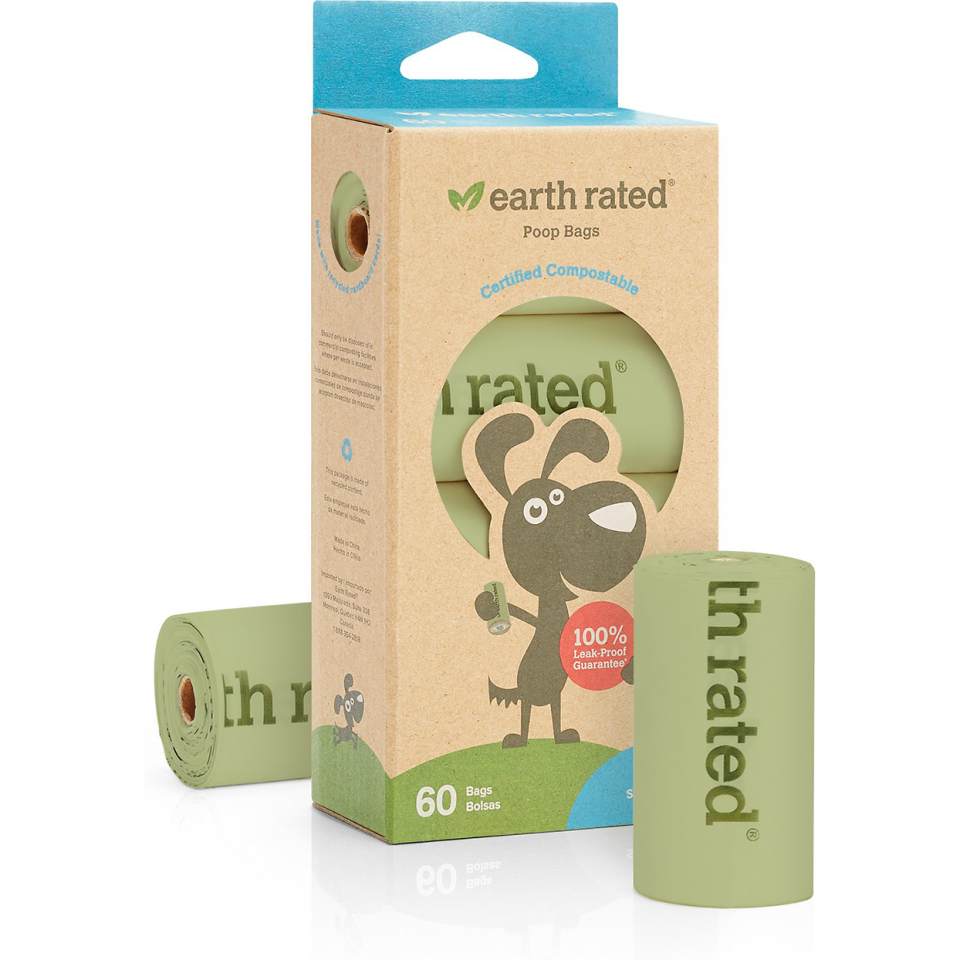
Booties or Paw Wax
When it's time to cozy up by the fire after an exhilarating time outdoors, get the snow and ice off your dog's paws, then give them a soothing rub with some paw wax. Or outfit them from the start in snazzy winter boots!
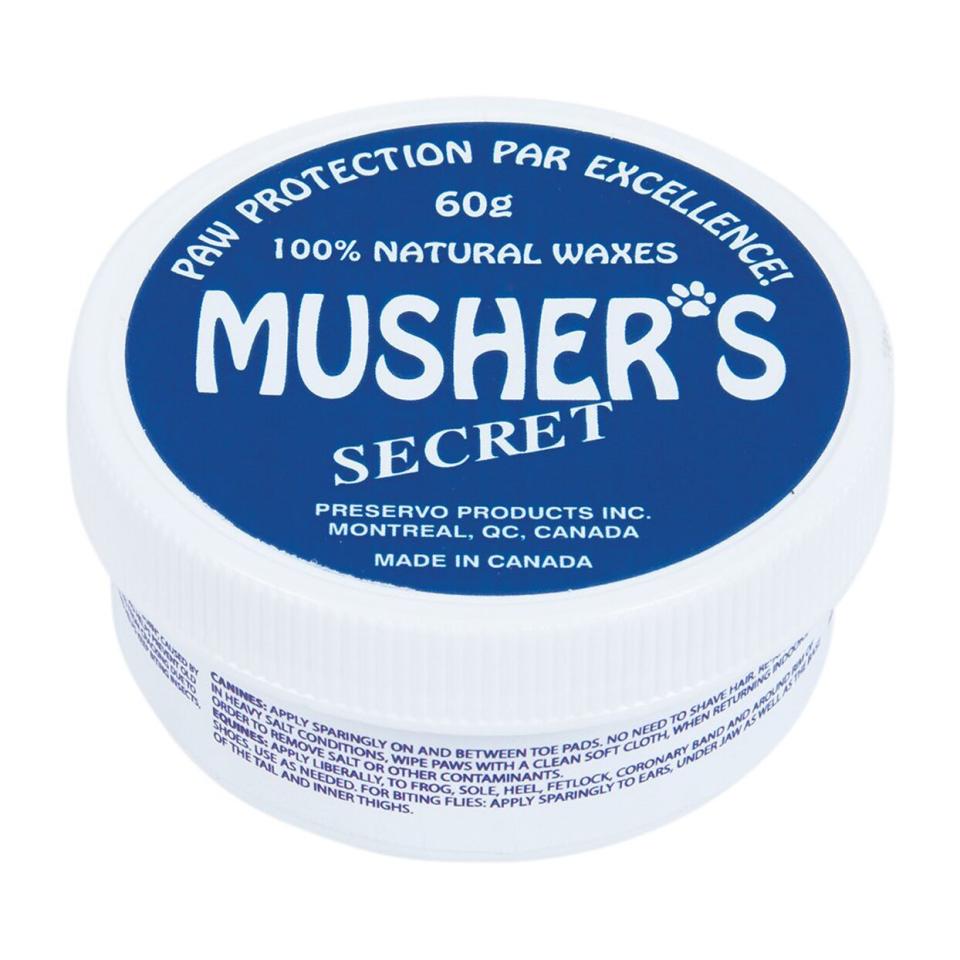
Skijor Belt
You'll also need a skijor belt, as that's what the tugline attaches to. It should be padded and fit securely on your hips with the help of leg straps. It's not advisable to use carabiners to attach the tugline, as they might not release under pressure. You'll get a lot of use from this, as it comes in handy for hiking and running excursions, too, or skijoring training without snow.
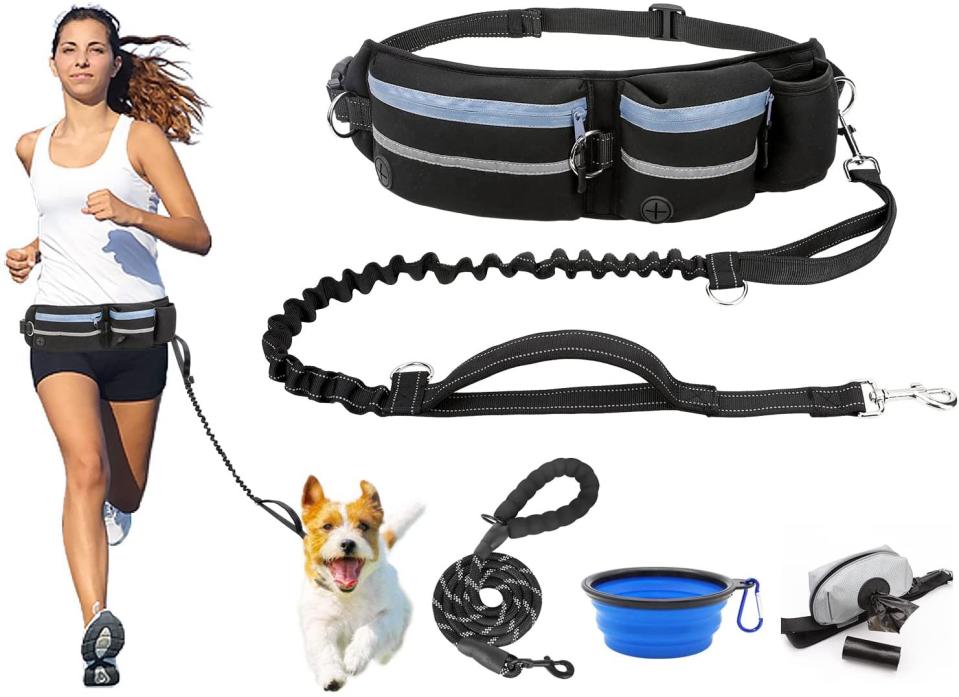
Also consider eye protection, a head lamp, and maybe even a fanny pack to stash away a few treats and the inevitable poop bags if your skijor belt doesn't have zippered pockets.
For more ideas about training, equipment, or dog skiing in general, check out K9 Powered Sports, The Loppet Foundation, or The Midwest Skijorers Club.
Now that you have all the details on dog skiing, give it a try. Tag a skiing selfie on social media using #DailyPawsPets. Once you teach your best winter pup to skijor, you might even be able to amp up your adrenaline rush with another doggie adventure like bikejoring or canicross!

